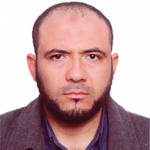This paper examines the level of inequality of opportunity among children in host communities in Jordan and Lebanon four years after the beginning of the Syrian crisis. The key focus of the comparative analysis is drawn on estimation of the human opportunity index and measurement of the relative contributions of different circumstances to inequality of opportunity for each country. In comparison with Jordan, Lebanon is found to have made significant progress in terms of access to basic services for children in host communities and how these opportunities are distributed between them. Appreciable improvements have been made, in both countries, in school attendance among 6-18 years old largely attributable to higher access to basic education (up to 81%) and lower inequality levels (less than 3%). However, there are areas of persistent and emerging concerns, including access to water and sanitation services mainly in Jordan. When applying the Shapley decomposition method to examine the question of how much does origin of a child contribute to the inequality in access to critical services we find, as expected, that native-refugee divide, added to other socioeconomic and educational family characteristics are key factors affecting child development outcomes in host communities. Accordingly, a more inclusive approach and direct interventions targeted at the less advantaged refugees groups in both countries are strongly needed to offer significant potential for improving overall equity in access to core basic housing services and schooling.

Research Fellows
Hatem Jemmali
Associate Professor, University of Manouba


